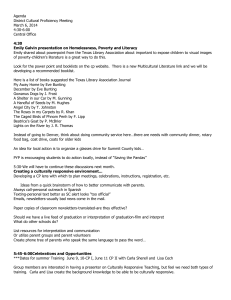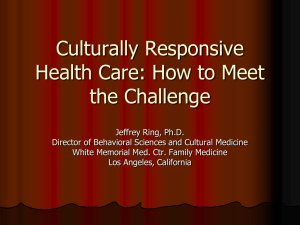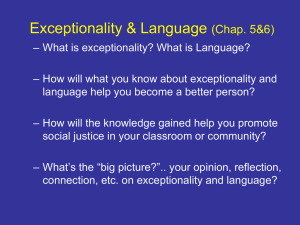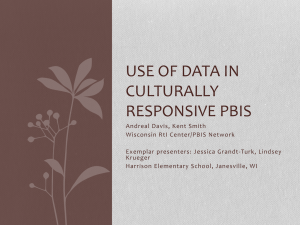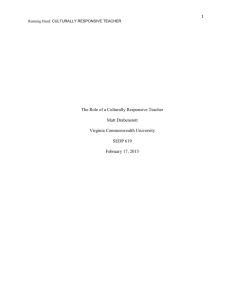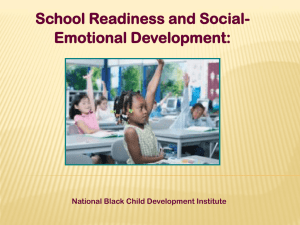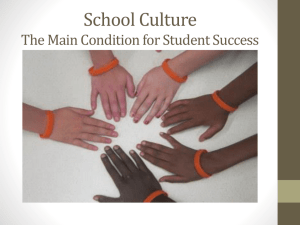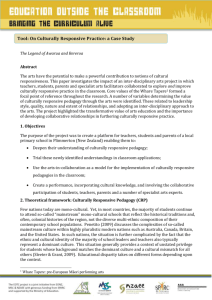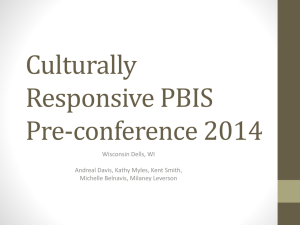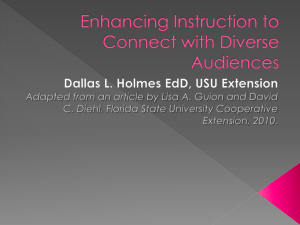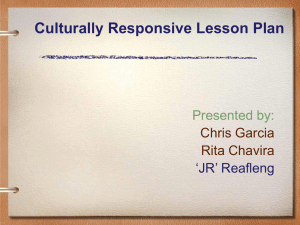intro - National Indian Education Association
advertisement
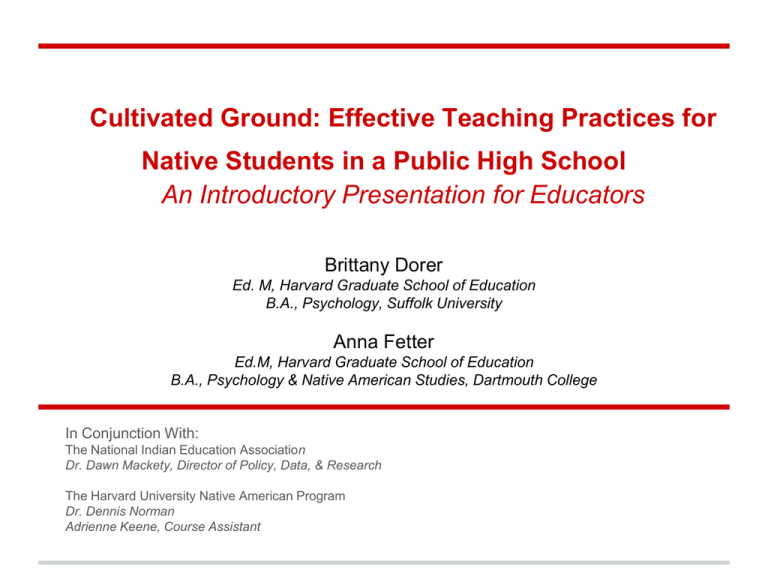
Cultivated Ground: Effective Teaching Practices for Native Students in a Public High School An Introductory Presentation for Educators Brittany Dorer Ed. M, Harvard Graduate School of Education B.A., Psychology, Suffolk University Anna Fetter Ed.M, Harvard Graduate School of Education B.A., Psychology & Native American Studies, Dartmouth College In Conjunction With: The National Indian Education Association Dr. Dawn Mackety, Director of Policy, Data, & Research The Harvard University Native American Program Dr. Dennis Norman Adrienne Keene, Course Assistant The Study • Dr. Mackety at the NIEA requested this project from two graduate students at the Harvard Graduate School of Education working under HUNAP Research Question: What are the effective teaching practices being utilized in public high schools that are successfully serving their Native students? • • • • Approach A case study of a public high school whose Native students are doing very well academically Positive research lens with an emphasis on classroom level studentteacher interaction A phone interview with a public boarding high school in Alaska as part of the literature review A site visit to an Early College-structured public high school in North Carolina with interviews with students, teachers, and administrators and classroom observation Findings Structural School-Wide Themes • • • • • • Despite significant structural, geographical, tribal, and political contexts, the school we spoke to and the school we visited overlapped considerably in best practices Effective teaching practices work in conjunction with structural and school-wide elements These structural themes appeared to be a key support and facilitator of the pedagogical practices used by educators Family and community involvement, including the Indian Education Resource Center, in students' education appeared to be essential in Native students' success School cultures reflecting these structural themes and the following pedagogical practices appeared to be purposefully created and cultivated by educators Structural themes: small school size, small class sizes, high teacher retention rates, having Native teachers and/or staff, students are able to take college classes while in high school Findings Cont'd Teaching Practices The effective teaching practices we observed fit under the umbrellas of the Culturally Responsive Schooling and Culturally Based Education models. "This educational approach requires a shift in teaching methods, curricular materials, teacher dispositions, and school–community relations" (Castagno and Brayboy, 2008, p. 942) Teaching Practices Student-Teacher Relationships Trust Student trust in educators and staff, feeling of safety and acceptance within those relationships Respect Mutual respect and positive regard for one another; including culture and background Pride Student pride in themselves and their schools; teacher and administrator pride in students Teaching Practices Cont'd High Expectations High expectations for student attainment; conveyed belief in student competency and ability to achieve academic goals High Standards High standards for student work and performance; consistent high standards while accommodating for student growth Teaching Practices Cont'd Culturally Responsive Pedagogy Recognition of cultural impact; awareness and sensitivity to needs of students; adjustment of teaching methods to individuals or groups of students Take Away In our study, we found that the best teaching practices for these Native students appeared to be consistent with the culturally responsive schooling and culturally based education models. As over half of Native students currently attend a public school, educators are tasked with the implementation of best practices in order to create a positive educational environment and foster positive academic outcomes. This is an introductory presentation to best practices for Native students in public schools. Resources for Educators Our Paper: Culturally Based Education and Responsive Schooling Models: Castagno, A. E., & Brayboy, B. M. J. (2008). Culturally responsive schooling for indigenous youth: A review of the literature. Review of Educational Research, 78(4), 941-993. Ewing, E. and Ferrick, M. (2012). For this place, for these people: An exploration of best practices among charter schools serving native students. Report for National Indian Education Association. Harvard University Native American Program. Gay, G. (2013). Teaching to and through cultural diversity. The Ontario Institute for Studies in Education of the University of Toronto: Curriculum Inquiry, 43(1), 48-70. Klump, J., & McNeir, G. (2005). Culturally responsive practices for student success: A regional sampler. Retrieved April 2013 from http://educationnorthwest.org/webfm_send/296 Resources for Educators Lipka, J. (2002). Schooling for self-determination: Research on the effects of including Native language and culture in the schools. ERIC Digest. Charleston, WV: ERIC Clearinghouse on Rural Education and Small Schools. Sorkness, H. L., & Kelting-Gibson, L. (2006, February). Effective teaching strategies for engaging Native American students. Paper presented at the annual meeting of the National Association of Native American Studies, Baton Rouge, LA. The Regional Educational Laboratory for the Central Region. (2011). Effective teaching of American Indian students: A preliminary response (abstract compilation). Links: Twenty (Self-)Critical Things I Will Do to Be a Better Multicultural Educator(Paul Gorski/EdChange/MultiCultural Pavilion Excerpt: “Culturally Responsive Teaching is Validating, Comprehensive, Multi-dimensional, Empowering, Transformative and Emancipatory” (Geneva Gay)
